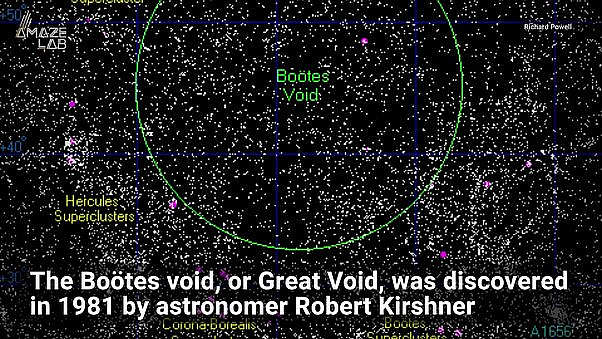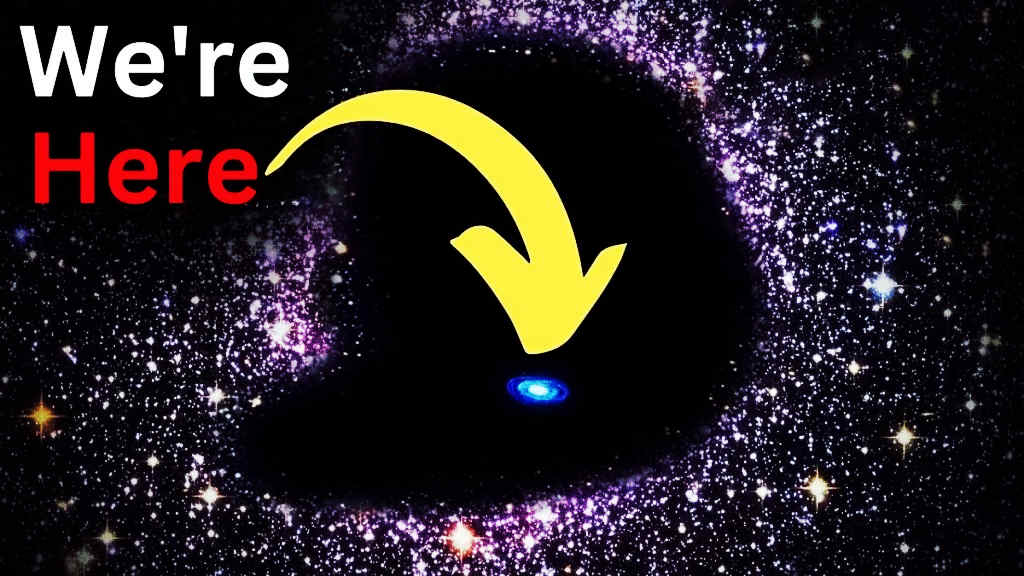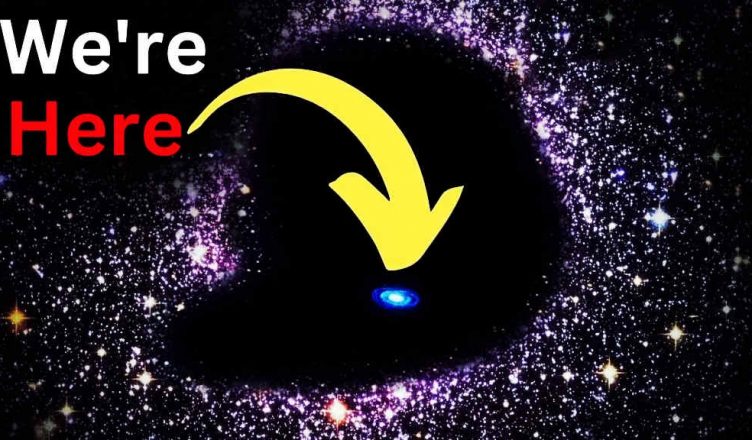For us humans, the Milky Way is undoubtedly immense, but on a more macroscopic level, the Milky Way is just an inconspicuous presence in the universe because in the observable universe, the number of galaxies can reach as high as trillions, and the Milky Way is just one of the insignificant members among them.
Perhaps you are unaware that galaxies are not distributed uniformly in space as one might imagine. In some regions, they cluster densely together, while in others, galaxies are extremely sparse, almost like a void. These sparsely populated regions of galaxies are called “voids,” and one of the most notable ones is the “Bootes Void” because of its enormous size.
The Bootes Void is located approximately 700 million light-years away from us, in the direction of the constellation Bootes. It is roughly spherical in shape with a diameter of about 330 million light-years. For a long time, astronomers were unaware of its existence because, from our perspective, a significant number of galaxies in the “foreground” and “background” filled the region where it is located.

It wasn’t until 1981 that astronomers discovered the “shadow” of this super void. At that time, a research team led by astronomer Robert Kirshner from the University of Michigan was conducting a galaxy redshift survey project. The purpose of their research was to measure the distances to different galaxies using cosmological redshift and create a three-dimensional map of the universe.
During their research, astronomers were astonished to find a massive “void” in the direction of Bootes. Subsequently, they named it the Bootes Void and published their discovery in the Astrophysical Journal.
This discovery garnered a lot of attention, and in the following years, other astronomers conducted more detailed observations and studies. They found that there were indeed galaxies in the Bootes Void, but the number of galaxies was extremely sparse. How sparse? To date, only 60 galaxies have been confirmed in this region.
It’s worth noting that the diameter of the observable universe is approximately 93 billion light-years. In other words, the Bootes Void, with its 330 million light-year diameter, occupies only about 0.35% of the entire observable universe’s diameter. In such a vast expanse of space, having only 60 galaxies makes it an incredibly desolate place. So, the question arises: why does such a huge void exist in the universe?

For this extraordinary phenomenon, one might easily think of advanced civilizations, as the universe is so vast, and the existence of highly technologically advanced extraterrestrial intelligences is not impossible.
According to the “Kardashev Scale,” a Type III civilization would have the capability to control an entire galaxy. So, if such powerful advanced civilizations exist in the universe, they might create “void regions” of this scale, like the Bootes Void. Could the Bootes Void be a masterpiece of a Type III civilization? We cannot completely rule out this possibility.
A reasonable speculation is that advanced civilizations consume an enormous amount of energy, continuously absorbing various materials from space as their energy source. As a result, the material in their activity areas becomes increasingly scarce, leading to the formation of “void regions” in cosmic space. As their activity range expands, the size of these “void regions” would also increase, eventually forming massive voids.
It’s worth mentioning that there is also a somewhat imaginative viewpoint that if advanced civilizations, like us humans on Earth, enjoy the thrill of speed, they might create a vast “void region” as a “racing track” where they can freely race their spacecraft. The sparsely populated galaxies in the void could be intentionally set as “milestones.”

However, it must be said that advanced civilizations are indeed fascinating, but for rigorous scientists, without concrete evidence, such viewpoints are not readily accepted. In reality, scientists have also provided explanations for the formation of the Bootes Void from a natural perspective, mainly with the following two theories:
- There are actually many voids distributed in the observable universe, but they are much smaller in scale than the Bootes Void. Therefore, the Bootes Void may have formed from the merging of many smaller voids, similar to how multiple soap bubbles merge into larger ones.
- The formation of the Bootes Void may be related to the early evolution of the universe. Specifically, after the “Big Bang” at the beginning of the universe’s birth, all matter was closely gathered together. However, due to the effects of quantum fluctuations, there were slight differences in the distribution of matter. Some regions had slightly higher densities, which attracted more matter and became denser, while other regions had slightly lower densities, causing their matter to flow towards the denser areas. This set up a positive feedback loop, and as the universe expanded, these tiny fluctuations were amplified, eventually evolving into scales of hundreds of millions of light-years.
Of course, both of these explanations are speculative and further research is needed to determine the true cause. In conclusion, the universe still holds many mysteries waiting for us to explore.
More UFOs and mysterious files, please check out our YouTube channel: MysFiles
Is the moon artificial? Evidence Proves the Moon Was Unnaturally Formed








